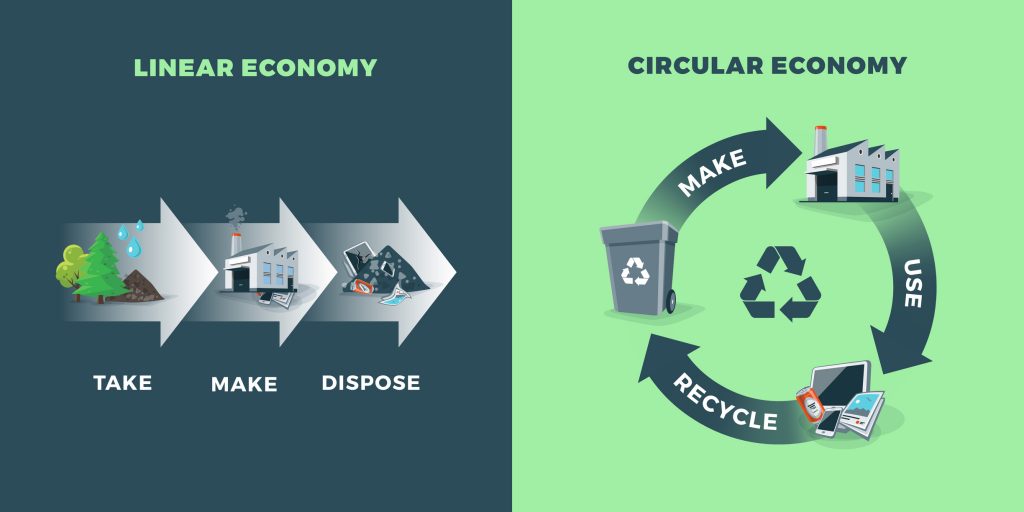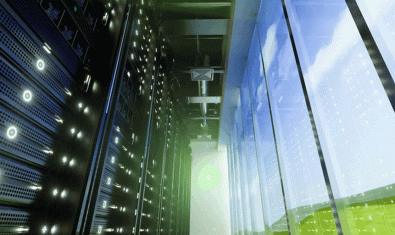How the Circular Economy Offers Huge Financial and Operational Benefits for OEMs

Sean Sheehan, Wisetek CEO, discusses how the Circular Economy offers huge financial and operational benefits for OEMs.
When it comes to the benefits of the Circular Economy, some industries stand to gain more than others. While SMEs – and even individuals – should embrace any form of sustainability, there’s a real economic benefit for Original Equipment Manufacturers (OEMs) to adopt the principles of the Circular Economy. In particular, those OEMs who are involved in the production of IT equipment.
A reason while OEMs do not is down to a basic misunderstanding of the Circular Economy. As a concept, it can be easy to think that it’s just some buzzword or trend which has vague aims to save the environment, and probably comes with a cost.
However, the aim of the Circular Economy is to challenge the dominance of the traditional Linear Economy which sees resources being used to create products that end up as rubbish in landfills, or otherwise outside the economy.
The Circular Economy questions how we view End of Life (EoL) products and tries, among other things, to reuse components as much as possible; this is especially true when it comes to electronic waste and IT Asset Disposition (ITAD) strategies.
Dell‘s Principles 1
When it comes to OEMs, Dell is one of the leading companies in this sphere which has embraced the Circular Economy. Their philosophy covers four areas, namely: transformation, innovation, collaboration and governance.
Transformation covers how they design and deliver products. Their designs emphasises ease of repair and recyclability, while incorporating sustainable materials in products and packaging. Also, their life cycle approach aims to keep viable products and parts in circulation in order to reuse, refurbish and resell products and parts.
Innovation covers the technological sphere which allows customers to tap into cloud computing and mobile devices, thus reducing the amount of hardware required. For example, by understanding data usage, companies can rethink how their products and services can be delivered and consumed.
Collaboration covers how they cooperate with the supply chain, which is a vital part of the transition to the Circular Economy. It is only when all contributors to the supply chain are open to reusing parts can the drive to zero waste be achieved.
Lastly, governance: Dell believes that governments and regulations have an important part to play by sharing best practices, harmonising standards and using public procurement policy. The full transition to the Circular Economy will not happen by innovative companies alone.
Dell’s Operational Success 1
As for the operational success of this approach, check out some of these stats:
- Dell is the first company to offer a computer made with UL Environment-certified closed-loop recycled plastics. By 2020 their goal is to use 50 million pounds of recycled-content plastic in their products.
- Dell has the world’s largest takeback program with recycling services in 78 countries. Over the last decade, Dell has recovered more that 1.4 billion pounds of used electronics.
- Each year they manage approximately 800,000 products that are returned or exchanged; if the products are not refurbished and resold, they are responsibly recycled.
- In 2014, 38% of their global purchased electricity needs came from renewably generated sources such as wind, water and solar.
The Migration path to the Circular Economy
In order for OEMs to benefit from the potential savings of the Circular Economy, there are a number of processes which a company needs to adopt, some of which are linked to their ITAD strategy.
The first involves auditing all ITAD assets used throughout the company; typically, a physical audit is required as only that, and not using network crawlers etc., will give an accurate account of the equipment.
When such details are logged into an asset register database and their inherent value – or lack of – is detailed the potential benefits from the Circular Economy will become clear as it will track the level of remanufacturing, external resale and recycling. Furthermore, all assets earmarked for disposition will have their data certified-erased or evidentially destroyed.
Assets which are destined for ‘recovery’ require careful dismantling in order to maintain their economic worth. Not only are the parts fed into the Circular Economy, the people performing this labour-intensive work are being employed by the Circular Economy.
Further work is created for parts when it comes to inspecting, testing, upgrading and the repackaging to resell into the spares industry. Items which have come to their end of life is sent to a licensed recycling centre.
Trash versus Treasure
There’s an old saying that one man’s trash is another man’s treasure. Yet with the Circular Economy, one man’s trash becomes his treasure. Alternatively – as a report by PwC points out – leaving a product in a landfill is the equivalent of burying treasure and losing the map.
So let’s stop burying our treasure, and follow a strategy which is good for corporate profits, our people, and the planet.
Wisetek specialize in Data Destruction services such as Hard Drive Destruction, Hard Drive Shredding and Hard Drive Disposal.
_________________________________
References









